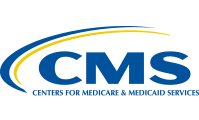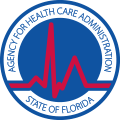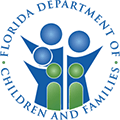What is Alcohol Abuse
Understanding Alcohol Abuse
Many people drink alcohol on a fairly regular basis at social gatherings or at the end of a stressful day as a way to unwind. Since drinking is a socially acceptable behavior, it is not always easy to tell when your drinking behavior has crossed the line into problem drinking. Alcohol abuse and addiction can sneak up on you; one minute you’re having a good time out with your friends and the next you are drinking to help numb negative emotions you don’t know how to cope with.
Once you have reached the point of alcohol addiction and dependency, your day may revolve around obtaining and consuming alcohol. You may have come to feel you are no longer able to function without it. Alcohol addiction is a chronic, progressive illness that is diagnosed when someone’s use of alcohol leads to distress that prevents them from functioning normally.
Individuals who are struggling with an alcohol addiction have cravings for alcohol that cause them to lose the ability to control their drinking and consistently engage in alcohol-seeking behaviors. After a period of time, a tolerance will build up and the individual will need to increase the amount of alcohol they consume in order to achieve the desired effects. Eventually, addiction will lead to physical dependence, which will lead to withdrawal symptoms if the abuser abruptly stops drinking.
Statistics
Statistics of Alcohol Abuse
The 12 month prevalence rates for alcohol addiction for adults in the U.S. have been estimated at 8.5%. These rates differ by gender and surveys indicate that men suffer from alcohol related disorders at far higher rates (12.4%) than women (4.9%). The highest rate of the disorder is found in individuals between the ages of 18 to 29 (16.2%). From early adulthood through middle age, the rates of alcohol abuse decease. Estimates suggest that as many as 10% of seniors in this country may suffer from alcohol-related problems.
Causes
What are the Causes of Alcohol Abuse
Factors that contribute to the development of the disorder include:
Genetic: Genetic factors have been shown to play a significant role in the development of alcoholism and account for about half of the total risk. No one gene has been discovered to be responsible, but it is likely that many different genes are involved in causing the development of an alcohol addiction. Research suggests that substance addictions may be associated with genetic variations in 51 different chromosomal regions.
Physical: Cravings for alcohol that lead to the development of addiction have been linked to specific brain structures. The amygdala, the region of the brain responsible for the emotional aspect of craving, has been shown to be smaller in individuals with a family history of alcoholism. Additionally, certain brain chemicals like serotonin and dopamine may play a role in addiction. Abnormal serotonin levels are associated with high levels of tolerance for alcohol. Dopamine is thought to help inhibit behavioral responses to alcohol and protect against alcoholism.
Environmental: Some individuals exposed to chronic, unpredictable life stress may begin to feel desperate to numb their emotions. They may use alcohol in the absence of other more adaptive, coping mechanisms. Over time, the individual may start using alcohol when anticipating negative events.
Risk Factors:
- Low self-esteem
- Presence of mental illness such as depression or anxiety
- Antisocial behaviors
- Having first drink between the ages of 11-14
Signs and Symptoms
Learn More About the Signs and Symptoms of Alcohol Abuse
There are a number of different signs and symptoms that may be present when an individual is using and abusing alcohol. Some of the most common symptoms include:
Behavioral Symptoms:
- Frequently getting in trouble
- Drop in attendance or performance at work or school
- Borrowing or stealing money
- Engaging in secretive behaviors
- Sudden changes in friends, hangouts, and hobbies
- Angry outbursts
Physical Symptoms:
- Blood-shot eyes
- Pupils larger or smaller than usual
- Slurred speech
- Impaired coordination
- Tremors
- Changes in appetite
- Changes in sleep patterns
- Sudden weight loss or gain
- Deterioration of physical appearance
- Sexual problems
- Blackouts
Cognitive Symptoms:
- Changes in personality or attitude
- Difficulty concentrating
- Lack of motivation, appearing to be spaced out
- Paranoia
- Impaired judgment
Psychosocial Symptoms:
- Sudden mood swings
- Anxious
- Depressed mood
- Irritability
- Unusual hyperactivity or agitation
Effects
Understanding the Effects of Alcohol Abuse
Continued use of alcohol is associated with many negative health consequences, as well as a variety of other adverse effects. The long term effects of alcohol abuse include:
- Liver disease
- Increased family problems and broken relationships
- Loss of job or expulsion from school
- Unintentional injuries (car crash, falls, burns)
- High blood pressure
- Stroke
- Nerve damage
- Sexual dysfunction
- Permanent brain damage
- Apathy and disorientation
- Cancer of the mouth and throat
- Ulcers
- Malnutrition
- Inflammation of the stomach walls
- Death due to overdose or suicide
Withdrawal and Overdose
Learn More About the Effects of Alcohol Withdrawal and Overdose
Withdrawal: Once an individual who has become physically dependent on alcohol stops drinking, there can be a number of withdrawal symptoms, some of which are serious medical conditions. Some of these symptoms may include:
- Psychological and physical cravings
- Anxiety
- Jumpiness
- Depression
- Irritability
- Loss of appetite
- Delirium
- Tremors
- Sweating
- Flushing
- Nausea
- Vomiting
- Headache
- Chills
Overdose: An alcohol overdose can occur when the amount of alcohol in your body increases quickly in a short period of time. This can occur by drinking more alcohol than your body can handle. If you suspect that someone has overdosed on alcohol call 911 immediately. Some of the most common symptoms may include:
- Changes in mental state
- Passing out
- Vomiting
- Seizures
- Decrease in body temperature
- Slow or irregular breathing
- Pale or blue skin
Co-Occurring Disorders
Alcohol Addiction and Co-Occurring Disorders
Almost any mental health or other substance abuse disorder can co-occur with alcohol use disorders. Some of the most common co-occurring disorders include:
- Substance abuse disorders
- Major depressive disorder
- Bipolar disorder
- Panic disorder
- Generalized anxiety disorder
- Intermittent explosive disorder
- Agoraphobia
- Insomnia
- Schizophrenia
- Antisocial personality disorder











